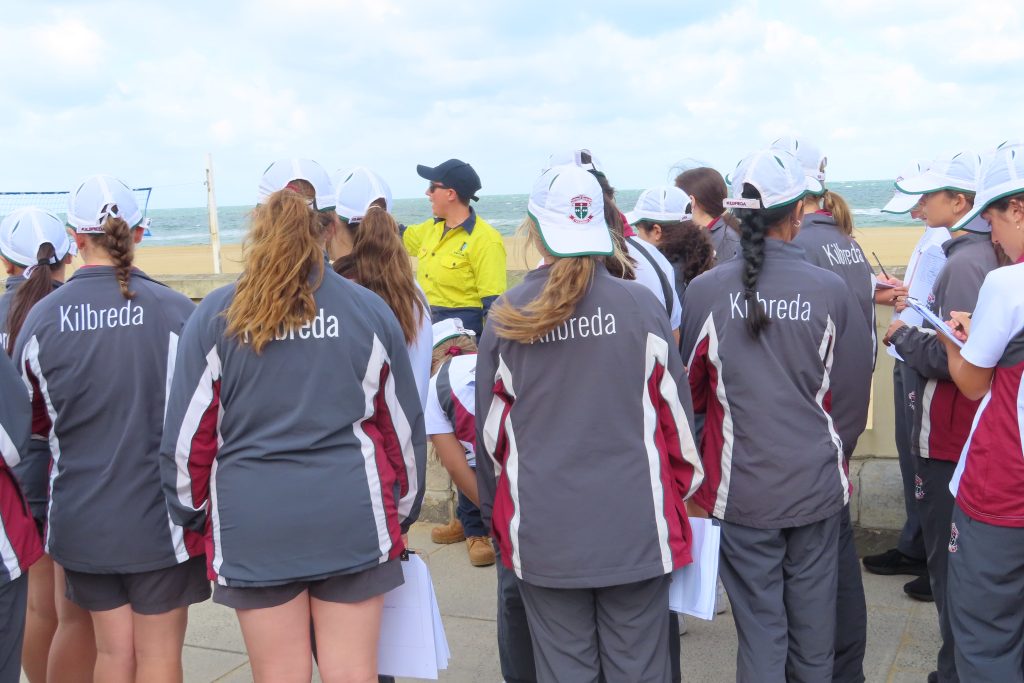Humanities
We have been working hard this year to add to the knowledge and skills required in the study of Geography. To this end, we have invested in new technologies and professional development of our team, particularly in Spatial technologies. The relevant professional body (Geography Teachers Association of Victoria- GTAV) has this to say on what future opportunities for our students might look like. There has been an explosion of employment opportunities in this field.
“Whether it’s gathering images of Earth for the space sector, dreaming up new ways to fuel our home or taking tourists on an adventure to Antarctica, Geography encompasses some really fascinating topics. Geography students develop an in-depth knowledge of how both human and physical environments work. This makes them excellent candidates for careers in the environment and climate change, travel and tourism and planning and local government.
Other sectors for knowledge of Geography comes in handy are international aid and development, logistics, sustainability and economic development. Geographers are great team workers and have top research, presentation and communication skills. These abilities open up opportunities in many different careers, from law to surveying, accounting to real estate.
Their ability to use advanced spatial technology skills also means they can pursue the growing emerging careers in the spatial sector.”
To ensure the capacity of our students to meet the demands of future employment, we have been organising new learning activities, working with digital map making and using online platforms to explore relevant and new skills. In Term 2, our Year 7 and 8 Geography students will participate in the GTAV MapIT competition to expand their understandings of these technologies and we are revamping the way in which we interact with our local environment through participation in field work skills days.
Year 8 Field Trip
The Year 8 classes recently participated in a whole day of fieldwork at and around Mordialloc Beach. They were fortunate to have the expert assistance of how this area of Kingston Council is being maintained and what planning is being done for its future. The Kingston rangers kindly donated their time and knowledge, conducting ‘Walk and Talk’ activities with the students where they discussed the works being completed around the Mordialloc Pier. They showed the students the impact of long shore drift on the foreshore and discussed their aims for the regeneration of this area for future generations to enjoy.
Students also worked with Geography staff on the importance of the area to the local Boon Wurrung people. They listened to the Creation of the Bay story which explains (among other things) how the local people appealed to Bunjil for his help when the rising water of the bay was threatening them, how the beach formed when the water stopped and how they tended the Yam Daisy for sustenance.
Students conducted various field work activities to test their hypothesis.
‘The physical coastal processes around the bay area visited are more dominant than the impact of human activities.’
Students and staff enjoyed a full day of learning, researching, listening and observing out of the classroom which will now be put to use in the completion of an Annotated Visual Display investigating the above idea. I hope you enjoy their perspective of this day.
Carolyn Callaghan
Learning Leader: Humanities
Student Reflection
On 6 and 7 March, the Year 8 cohort were lucky enough to take part in an excursion to the Mordialloc Life Saving Club (MLSC) and the surrounding beach area. We talked to rangers from the City of Kingston who take care of, and nurture, the fragile and ever-changing environment of the foreshore. We talked about arising and current issues for these areas and what we could do to help dissipate these challenges.
We viewed a PowerPoint presentation, which gave us lots of valuable information about our beautiful coasts and delved deeply into Indigenous connections with this beautiful area. We all were given a booklet to take notes and fill with data that we would soon be using for our AVD assignment, considering the hypothesis: “The physical landforms and processes around the bay are more dominant than the impact of human activities.”
We walked around the beach area and recorded many natural processes and human interventions. Overall, we had lots of fun and learnt a vast amount about this fragile, bewitching and ever-changing environment.
Pratima Thomas
Year 8










